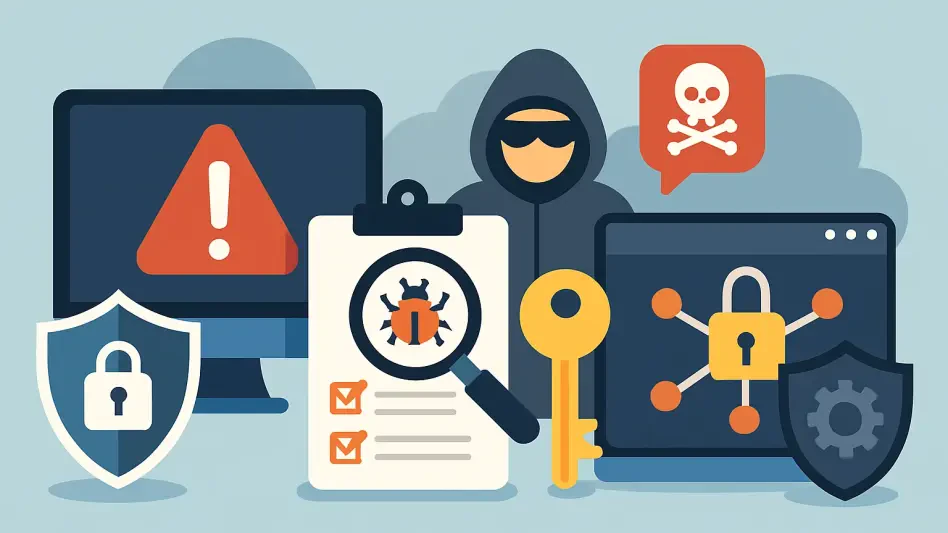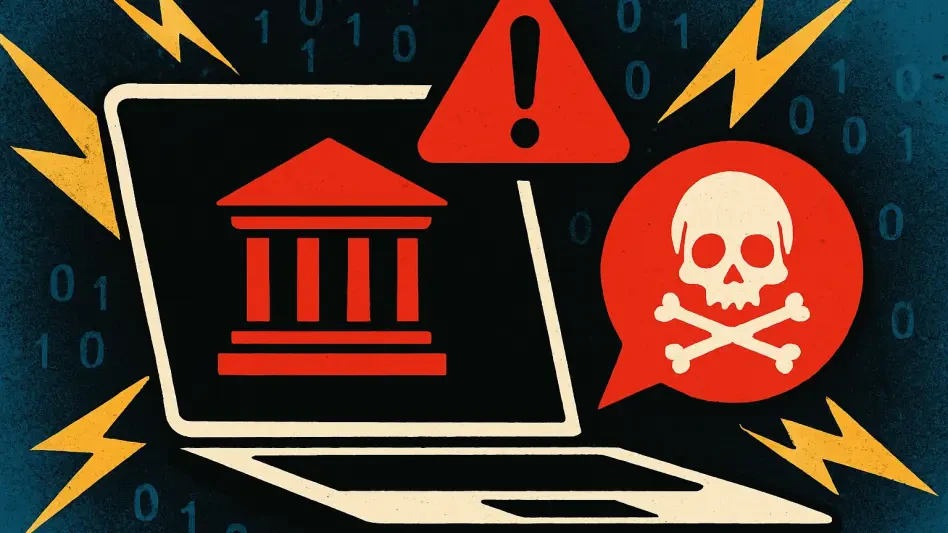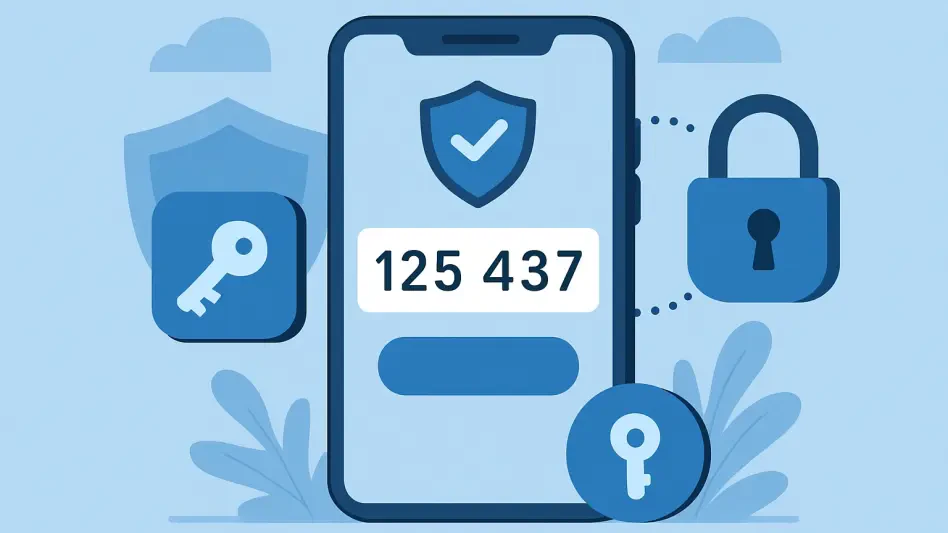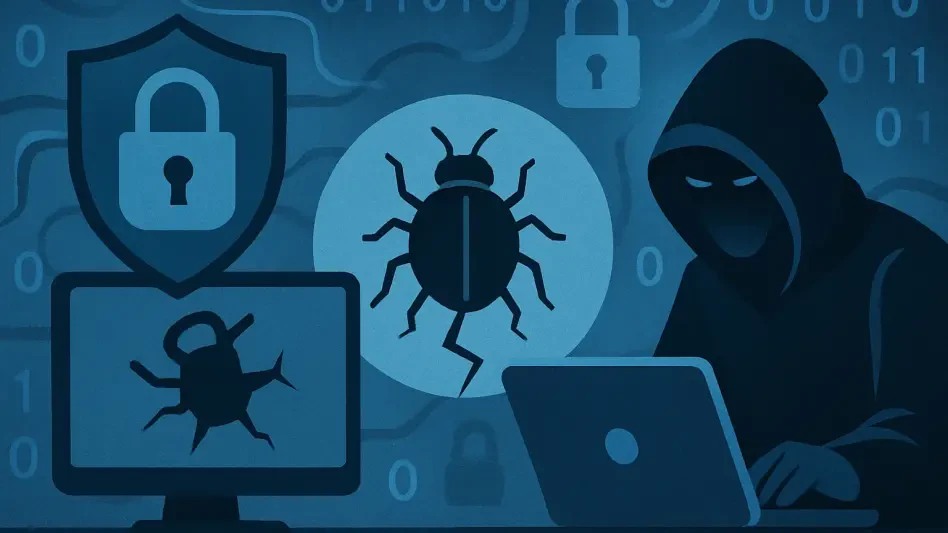In an era where cyberattacks are not a question of if but when, the importance of robust incident response (IR) mechanisms has never been more critical, especially as organizations across industries grapple with increasingly sophisticated threats like ransomware and advanced persistent threats (APTs). The potential for devastating financial loss, reputational damage, and operational downtime looms large. The ability to detect, contain, and recover from breaches swiftly is no longer a luxury but a necessity for survival in the digital landscape. Cyber incidents can strike any entity, regardless of size or sector, with consequences that ripple far beyond immediate data loss to impact customer trust and regulatory standing.
The focus on effective incident response (IR) solutions comes at a time when the complexity of IT environments continues to grow, spanning on-premises systems, cloud platforms, and hybrid setups. Having the right tools in place can mean the difference between a minor disruption and a catastrophic failure. This exploration delves into ten leading IR tools and companies that are at the forefront of combating cyber threats. Selected for their proven track records, innovative technologies, and tailored approaches, these solutions offer a spectrum of capabilities to address the diverse needs of businesses, from small enterprises to global corporations. Their collective mission is clear: minimize the impact of breaches and fortify defenses against future attacks.
Key Themes in Incident Response for 2025
Speed and Efficiency in Threat Containment
The urgency of a rapid response stands as a fundamental pillar in the realm of incident response, especially when it comes to managing cyber threats effectively. Tools such as CrowdStrike’s Falcon platform have set a benchmark with their “Day One” remediation approach, ensuring that threats are neutralized almost as soon as they are detected. Similarly, Rapid7 distinguishes itself by guaranteeing a one-hour response time for clients with retainer agreements, underscoring the critical need to reduce dwell time—the duration an attacker remains undetected within a system. Limiting this window is essential to curtailing the extent of damage, whether it manifests as data theft, system corruption, or financial extortion. Speed is not just a feature but a lifeline in mitigating the cascading effects of a cyber breach.
Beyond the immediate containment of threats, efficiency in response processes plays a vital role in maintaining business continuity, ensuring that organizations can quickly adapt and recover from potential disruptions. Tools that prioritize swift action often integrate automated alerts and workflows to streamline the initial stages of incident handling. This allows organizations to allocate resources effectively, focusing human expertise on complex decision-making rather than routine tasks. For instance, platforms that offer real-time dashboards and prioritized threat notifications enable teams to address the most pressing issues first. The emphasis on efficiency ensures that even in the chaos of a breach, organizations can maintain a semblance of control, preventing minor incidents from escalating into full-blown crises.
Technology and Human Expertise Integration
A defining characteristic of leading incident response (IR) tools is their ability to merge cutting-edge technology with seasoned human insight, ensuring a robust defense against cyber threats. Platforms like Palo Alto Networks’ Cortex XDR and Microsoft 365 Defender exemplify this by employing automation to detect anomalies and flag potential threats at scale. However, automation alone cannot tackle the nuanced nature of sophisticated attacks such as ransomware. This is where elite response teams step in, offering the analytical depth required to interpret data, trace attacker movements, and devise tailored countermeasures. This hybrid model ensures that speed does not come at the expense of accuracy, providing a balanced approach to crisis management.
The integration of human expertise also addresses the limitations of technology in evolving threat landscapes. While algorithms can process vast amounts of data quickly, they often lack the contextual understanding that experienced professionals bring to the table, making this combination essential for effective cybersecurity. These experts can identify subtle indicators of compromise that machines might overlook, such as unusual user behavior or novel attack patterns. Furthermore, their strategic guidance during recovery—whether negotiating with ransomware actors or advising on public communications—adds a layer of support that technology alone cannot replicate. This synergy between automated systems and human judgment forms the backbone of resilient incident response strategies.
Leading Trends Shaping Incident Response
Cloud-Native and Integrated Platforms
One of the most transformative trends in incident response is the shift toward cloud-native solutions that offer seamless integration across diverse IT environments. Tools like Splunk Enterprise Security and CrowdStrike’s Falcon platform are leading this charge by providing scalable architectures that deliver unified visibility over endpoints, networks, and cloud systems. As organizations increasingly adopt hybrid infrastructures, the ability to monitor and respond to threats in real time across multiple domains becomes indispensable. This trend reflects the growing complexity of digital ecosystems, where fragmented visibility can create blind spots ripe for exploitation by attackers.
The adoption of cloud-native platforms also facilitates agility in response capabilities, enabling organizations to swiftly adapt to changing conditions. These tools are designed to handle large volumes of data with minimal latency, ensuring that security teams can access critical information without delay. Additionally, their integration features allow for compatibility with existing systems, reducing the friction of implementation. For businesses operating in dynamic environments, such as those with remote workforces or fluctuating workloads, this adaptability is a key advantage. By centralizing data and response mechanisms, cloud-native solutions empower organizations to maintain a cohesive defense posture, even as their operational landscapes evolve.
Emphasis on Proactive Security and MDR
Another significant trend reshaping incident response is the growing focus on proactive security measures alongside managed detection and response (MDR) services. Companies like Cynet, with its CyOps service, and IBM, through its X-Force capabilities, offer 24/7 monitoring to act as an extension of internal teams. This is particularly valuable for organizations facing a cybersecurity skills gap, where in-house expertise may be insufficient to handle sophisticated threats. MDR services bridge this divide by providing continuous oversight and immediate action, ensuring that potential issues are addressed before they escalate into major incidents.
Proactive security extends beyond monitoring to include strategic planning and preparation, ensuring organizations are well-equipped to handle potential threats. Tools like Rapid7 emphasize vulnerability management and cyber crisis planning, helping organizations identify weaknesses and develop robust incident response frameworks. This forward-thinking approach acknowledges that while reacting to breaches is critical, preventing them in the first place is equally important. By conducting regular assessments and simulations, businesses can uncover potential entry points for attackers and reinforce their defenses accordingly. This dual emphasis on prevention and response cultivates a culture of resilience, equipping organizations to withstand the relentless evolution of cyber threats.
Detailed Breakdown of Top Incident Response Tools
Mandiant: Unmatched Expertise in High-Stakes Crises
Mandiant emerges as a leader in incident response, renowned for its profound expertise in navigating high-stakes breach investigations and offering unparalleled insight into attacker behaviors. Drawing from a wealth of frontline threat intelligence gathered from thousands of real-world incidents, this tool provides critical support to organizations under attack. Its global presence, spanning over 30 countries, ensures that support is accessible wherever a crisis unfolds. Additionally, Mandiant offers crisis communications assistance, helping organizations manage public perception during turbulent times. While its premium pricing may pose a barrier for smaller entities, it remains a top choice for large enterprises and government agencies facing sophisticated threats.
The depth of Mandiant’s services extends to proactive offerings such as compromise assessments, which identify hidden vulnerabilities before they are exploited, ensuring robust protection for organizations. This focus on prevention complements its reactive capabilities, creating a comprehensive security framework. For organizations in highly regulated sectors, the ability to rely on a tool with a proven track record in complex investigations is invaluable. Mandiant’s elite team of responders is equipped to handle everything from data breaches to nation-state attacks, ensuring that even the most intricate incidents are resolved with precision. This makes it an indispensable ally for entities where the stakes of a cyber incident are extraordinarily high.
CrowdStrike: Speed and Cloud-Native Innovation
CrowdStrike sets itself apart with an unwavering commitment to speed, leveraging its cloud-native Falcon platform to deliver rapid deployment and immediate endpoint visibility. Its “Day One” remediation capability ensures that threats are contained almost instantly, a critical factor in minimizing damage. The Falcon Complete MDR service, supported by the OverWatch threat hunting team, further enhances its effectiveness by providing continuous oversight. While its reliance on proprietary technology and higher cost may not suit every budget, CrowdStrike excels for organizations that prioritize tech-driven, fast-paced response and recovery.
The cloud-native architecture of CrowdStrike offers a distinct advantage in today’s distributed IT environments. By operating entirely in the cloud, it eliminates the need for on-premises hardware, reducing setup time and maintenance overhead. This scalability is particularly beneficial for businesses with fluctuating demands or geographically dispersed operations. Moreover, the platform’s ability to integrate with other security tools enhances its utility, allowing for a more cohesive defense strategy. For companies seeking to stay ahead of rapidly evolving threats, CrowdStrike’s emphasis on innovation and agility positions it as a formidable solution in the incident response arsenal.
Rapid7: Strategic Growth and Rapid Response
Rapid7 distinguishes itself by blending rapid incident response with a strong focus on strategic security growth. Its promise of a one-hour response time for retainer clients underscores a dedication to urgency, ensuring that breaches are addressed before they spiral out of control. The Insight platform provides deep analytics, offering visibility into vulnerabilities and attack patterns that inform both immediate actions and long-term planning. While it may lack the global scale of some competitors, Rapid7 shines as a partner for businesses looking to improve their security posture over time.
Beyond its technical capabilities, Rapid7 offers valuable post-breach guidance that helps organizations learn from incidents and fortify their defenses. This includes tailored recommendations on vulnerability management and process improvements, turning a crisis into an opportunity for enhancement. Such an approach is particularly appealing to mid-sized companies that may not have the resources for extensive in-house security teams but still require robust support. By fostering a partnership model, Rapid7 ensures that clients are not just reacting to threats but actively building resilience, making it a compelling choice for those with an eye on sustainable security development.
IBM: Global Scale and Comprehensive Solutions
IBM stands as a titan in incident response, leveraging its vast network of security operations centers (SOCs) and the renowned X-Force threat intelligence team to address large-scale incidents. Its offerings span the full spectrum of security needs, from consulting to managed detection and response, making it a go-to for highly regulated industries. The integration of AI and automation further boosts response efficiency, though the complexity of its pricing structure can present challenges. IBM is ideally suited for large enterprises and government entities requiring comprehensive, globally supported solutions.
The global reach of IBM ensures that no matter where an incident occurs, support is readily available, which is particularly crucial for multinational organizations that operate across diverse regulatory landscapes and face varied threat profiles. Additionally, its focus on end-to-end services means that clients receive assistance not only during a crisis but also in preparing for future challenges through strategic planning and training. While the breadth of its offerings can be overwhelming for smaller entities, for those with complex needs, IBM provides a depth of resources and expertise that few can match, solidifying its position as a leader in the field.
Palo Alto Networks: Intelligence-Driven Investigations
Palo Alto Networks combines the power of Unit 42 threat intelligence with the Cortex XDR platform to deliver a unified perspective on threats across environments, ensuring a robust defense against cyber risks. This intelligence-driven approach excels in attribution, providing context during investigations and aiding in ransomware negotiations. While it is most effective for users already within its product ecosystem, the higher cost and dependency on proprietary tools may limit its appeal to others. It remains a strong contender for organizations seeking to pair leading technology with expert response capabilities.
The emphasis on threat intelligence allows Palo Alto Networks to offer insights that go beyond surface-level detection, enabling organizations to understand the motivations and methods behind attacks. This can be a game-changer in crafting targeted defenses and recovery plans. Furthermore, its platform’s ability to correlate data from multiple sources ensures a holistic view of the threat landscape, reducing the likelihood of missed indicators. For companies heavily invested in advanced security technologies, this tool provides seamless integration of response and prevention, making it a strategic asset in combating sophisticated cyber threats.
Microsoft: Ecosystem-Optimized Security
Microsoft’s incident response services are finely tuned for organizations embedded within its ecosystem, offering seamless integration with tools like Microsoft 365 Defender and Sentinel for SIEM and XDR capabilities. This unified platform, enhanced by AI-driven automation, provides cost-effective protection tailored to its environment. While it may be less effective for businesses outside this ecosystem, it stands as an ideal solution for those heavily reliant on Microsoft’s productivity and cloud solutions.
The strength of Microsoft’s approach lies in its ability to simplify security for its users. By embedding incident response features into familiar tools, it reduces the learning curve and operational friction often associated with adopting new systems. This is particularly beneficial for organizations with limited technical staff, as it allows for efficient threat management without requiring extensive retraining. Additionally, the use of AI to prioritize alerts and automate responses ensures that critical issues are addressed promptly, even in resource-constrained settings. For businesses looking to consolidate their security efforts within a trusted platform, Microsoft offers a compelling and accessible option.
Splunk: Data Analytics for Customized Response
Splunk carves a unique niche in incident response by focusing on data ingestion and analysis through its Enterprise Security and SOAR platforms. Unlike traditional incident response services, it empowers organizations to build customized threat investigation programs by leveraging robust analytics. While its power is undeniable, managing the platform requires significant expertise, making it best suited for entities looking to enhance internal capabilities rather than outsource response entirely.
The flexibility of Splunk’s tools allows security teams to tailor their approaches to specific needs, whether that involves correlating logs for anomaly detection or automating response workflows. This adaptability is a key strength for organizations with complex or unique IT environments that demand customized solutions. However, the reliance on skilled personnel to maximize its potential can be a barrier for smaller teams lacking such resources. For those with the capacity to invest in training or dedicated staff, Splunk provides a foundation for building a sophisticated, data-driven incident response strategy that can evolve with emerging threats.
Cynet: Accessible All-in-One for SMEs
Cynet offers a compelling all-in-one platform that integrates next-generation antivirus (NGAV), endpoint detection and response (EDR), and network detection and response (NDR), supported by its 24/7 CyOps team for MDR services. Its rapid deployment and cost-effectiveness make it particularly accessible to small and medium-sized enterprises (SMEs) that may lack the budgets of larger counterparts. While it may not carry the brand recognition or scale of bigger players, Cynet delivers comprehensive security for those needing straightforward, expert-backed solutions.
The design of Cynet’s platform prioritizes ease of use, ensuring that even organizations with minimal technical expertise can implement and manage their security operations effectively. This democratization of advanced tools is crucial for SMEs, which often face the same threats as larger entities but lack comparable resources to combat them. Additionally, the inclusion of round-the-clock support through CyOps means that help is always available, bridging the gap left by limited in-house teams. For smaller businesses seeking a balance between affordability and robust protection, Cynet stands out as a practical and effective choice in the incident response landscape.
AT&T Cybersecurity: Network-Integrated Protection
AT&T Cybersecurity leverages its Unified Security Management platform and Alien Labs threat intelligence to provide integrated protection, particularly for users of its network infrastructure. Its strength lies in offering seamless support that ties endpoint and network security into a cohesive framework, bolstered by global reach. However, its focus on product integration may overshadow pure incident response services, making it most suitable for organizations already reliant on AT&T systems.
The advantage of network-integrated security cannot be understated for businesses operating within such ecosystems, as it ensures a unified approach to threat detection and mitigation, significantly reducing response times by eliminating the need to coordinate across disparate systems. Furthermore, the backing of Alien Labs provides access to cutting-edge threat intelligence, enhancing the ability to anticipate and counter emerging risks. For companies entrenched in AT&T’s infrastructure, this tool offers a tailored solution that maximizes existing investments while delivering robust incident response capabilities, though others may find its scope somewhat limited.
Secureworks: Human-Centric Expert Support
Secureworks emphasizes a human-centric approach to incident response, delivering high-touch, expert-led services through its Counter Threat Unit and the Taegis platform. As a pure-play managed security service provider (MSSP), it ensures dedicated support that prioritizes personalized engagement over automated processes. While reliance on proprietary technology and associated costs are considerations, Secureworks is a strong fit for organizations of all sizes seeking a partner that values human expertise in navigating cyber crises.
The focus on expert support allows Secureworks to offer nuanced guidance that adapts to the specific circumstances of each incident. This is particularly valuable in scenarios where standard protocols may not apply, such as novel attack vectors or intricate regulatory requirements. Additionally, its commitment to acting as an extension of client teams fosters trust and collaboration, ensuring that responses are not only effective but also aligned with organizational goals. For businesses that value a hands-on, consultative approach to security, Secureworks provides a level of dedication and insight that sets it apart in a technology-heavy field.
Reflecting on Cyber Resilience Achievements
Looking back, the journey of incident response tools through recent years has showcased remarkable strides in combating ever-evolving cyber threats, with innovations that continue to redefine cybersecurity. The ten solutions highlighted demonstrated exceptional prowess, from Mandiant’s deep investigative expertise to Cynet’s accessible platforms for smaller businesses. Their collective efforts shaped a landscape where speed, technology, and proactive measures converged to minimize breach impacts and strengthen organizational defenses across diverse sectors.
A standout reflection lies in how these tools adapted to the growing complexity of digital environments, integrating cloud-native architectures and managed services to bridge resource gaps. Their focus on threat intelligence and tailored solutions addressed unique challenges faced by enterprises and SMEs alike, ensuring that no organization was left vulnerable. This adaptability underscored a pivotal shift toward resilience as a core principle of cybersecurity.
Moving forward, the emphasis must remain on continuous innovation and collaboration. Organizations should leverage the strengths of these IR tools—whether it’s IBM’s global scale or Secureworks’ human-centric support—to build comprehensive strategies that anticipate future risks. Investing in proactive planning and forging partnerships with these providers will be key to navigating the dynamic threat landscape, ensuring sustained protection and recovery in the face of adversity.








